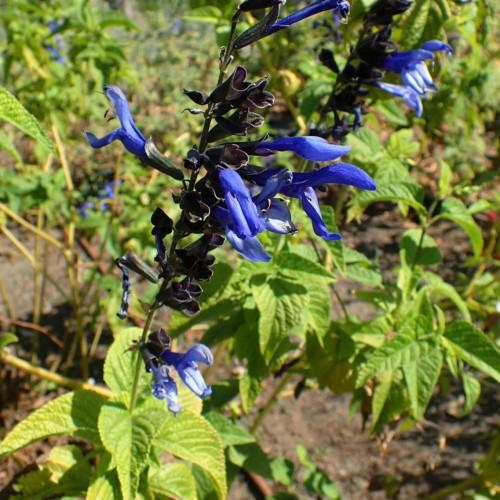
blue anise sage
Salvia coerulea
Cycle:
Herbaceous Perennial
Watering:
Average
Hardiness Zone:
8
Flowers:
Flowers In Spring
Sun:
Full sun, Part sun/part shade
Soil:
Well-drained
Fruits:
Fruits In Autumn Ready In Fall
Leaf:
Yes
Growth Rate:
High
Salt Tolerant:
Yes
Care Level:
Medium
watering
Blue anise sage (Salvia coerulea) should be watered deeply about once a week during the growing season (April to October) in order to keep the soil moist but not saturated. During the winter months, you can reduce watering to every other week but still keep the soil consistently moist. After watering, ensure that the soil drains away freely. This will help keep the plant's roots from sitting in overly-moist soil, which can cause root rot. Additionally, blue anise sage plants should be placed in a location that receives full sunlight and warm temperatures for at least 4 to 5 hours a day.
sunlight
Blue Anise Sage needs to be planted in a sunny spot which receives direct sunlight for at least 6 hours each day. It will also benefit from afternoon shade, particularly during the hottest parts of summer. This plant prefers cooler temperatures so the best time for it to receive sunlight is during the morning or early afternoon hours. It should be protected from direct afternoon sun as this can be overly harsh and damage the foliage. Blue Anise Sage should also be watered regularly, particularly during periods of drought or high heat, to ensure it has access to the essential moisture it needs to thrive.
pruning
Blue anise sage (Salvia coerulea) should be pruned lightly in the late spring or early summer to maintain its shape and size. Start by removing any dead, diseased, damaged, or crossing branches. This will encourage the plant to concentrate its energy on producing healthy foliage. Next, prune to shape the plant, such as removing any overly long branches or restoring an even canopy of foliage. Finally, cut back the stems to reduce the plant's size. Aim for a maximum of 1-third of the total height.
